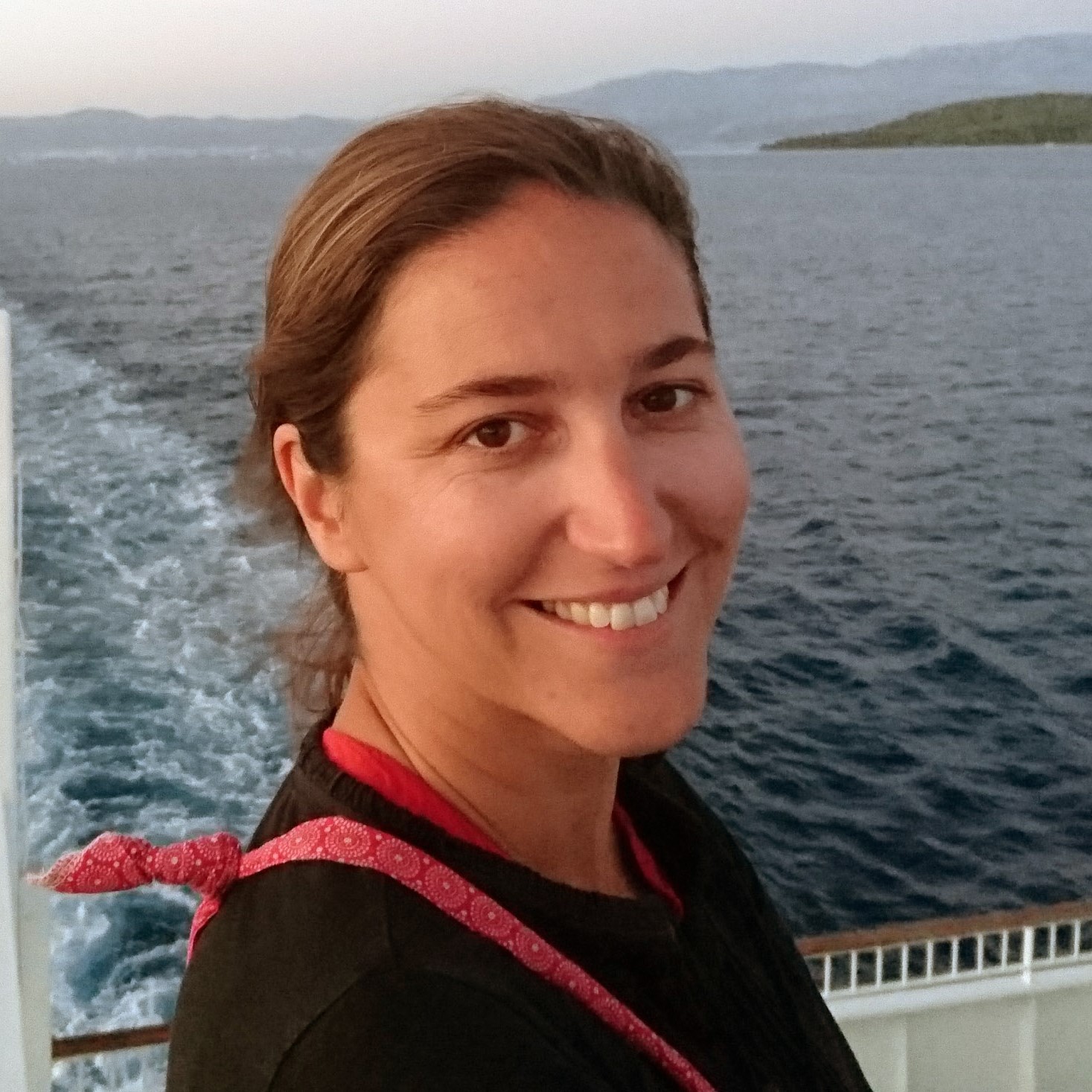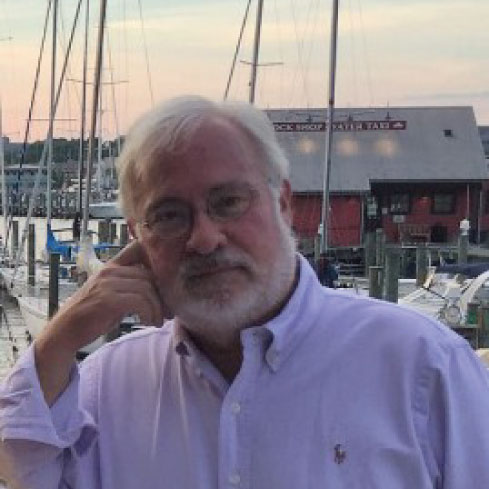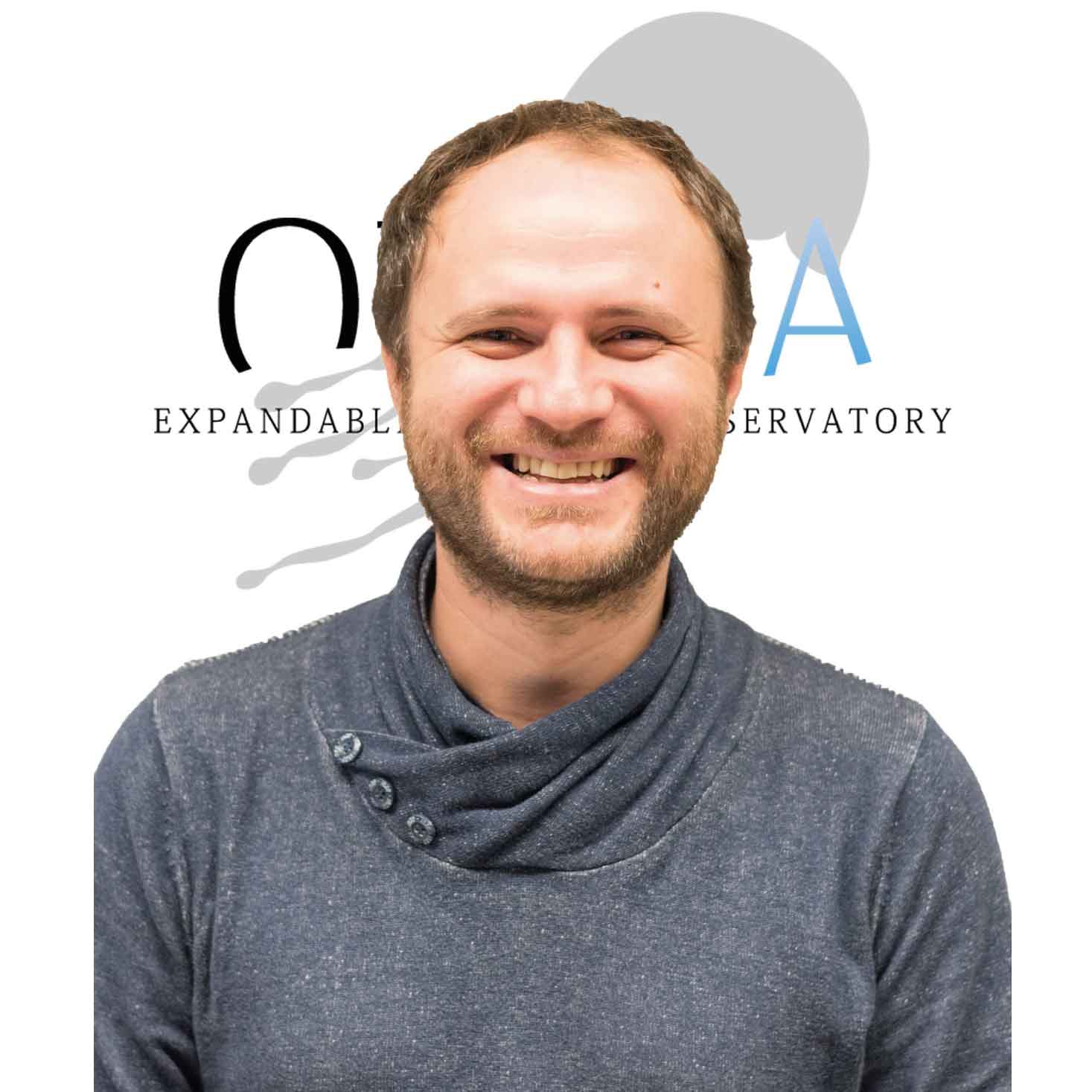TSC 2021 “Observing Ocean Sound”
Draft Agenda
local time (GMT+1)
08:30 – 08:50
Welcome – EMSO DG
Juan José Dañobeitia
08:50 – 09:00
Introduction and logistics – EMSO TSC
Conference Chairman: Eric Delory
09:00 – 12:00
Keynotes – 20 min each + 10 min question + 20 min poster pitch presentations
Chair: Sergio Jesus, co-chair: Mathilde Cannat
Theme A. Anthropogenic noise & other environmental sounds
Impact of anthropogenic noise on cetaceans
Keynote speaker: Ana Širović
Q&A session
Poster pitch presentations
10’ Coffee Break
Theme B. Acoustics for studying marine geophysics
What does long-term monitoring of the ocean soundscape tell us?
Keynote speaker: Jean-Yves Royer
Q&A session
Poster pitch presentations
10’ Coffee Break
Theme C. Bioacoustics
Uses of Marine Bioacoustics to estimate soundscapes, distribution and
abundance of soniferous animals, and effects of human-generated sound
Keynote speaker: Peter L. Tyack
Q&A session
Poster pitch presentations
12:00 – 13:00
Lunch break
13:00 – 13:30
“One Ocean Network for Deep Observation“, a United Nations “Ocean Decade” endorsed action
Chair: Paul Gaughan
Keynote speakers: Juan José Dañobeitia, Nan-Chin CHU, Hélène Leau
13:30 – 16:30
Keynotes – 20 min each + 10 min question + 20 min poster pitch presentations
Theme D. Technologies for underwater sound observing, from acoustic data acquisition to products
Chair: Joaquín del Rio, co-chair: Davide Embriaco
Theme D.1 Ocean Networks Canada – the next decade
Keynote speaker: Lanfranco Muzi
Q&A session
Poster pitch presentations
10’ Coffee Break
Theme D.2 Sound fields in harbors and other constrained spaces
Keynote speaker: Michael Porter
Q&A session
Poster pitch presentations
10’ Coffee Break
Theme D.3 Acoustic observation device & autonomous surface vessels – Observation of abyssal sperm whale foraging activity
Keynote speaker: Antoine Thebaud
Q&A session
Poster pitch presentations
16:30 – 17:30
Poster Session
Chair: Daniel Mihai Toma
Thursday 21/10
09:00 – 12:00
Training Session
Training 1 – Marine soundscapes: methods for the acquisition of ocean sound from fixed and mobile platforms
Trainer: Gianni Pavan
In parallel with:
Training 2
Training 2.1 Requirements and methods for the production of ocean noise time series; Acoustic data FAIRness, standard formats
Trainers: Enoc Martinez, Daniel Mihai Toma, Joaquin del Rio (Duration: 90 min)
Training 2.2 PAM2Py – Passive Acoustic Monitoring for Python
Trainers: Ricardo Duarte and Orlando Camargo Rodríguez (Duration: 90 min)
12:00 – 13:30
Lunch break
13:30 – 16:30
Training Session
Training 4 – Introduction to ocean particle velocity and measurement techniques
Trainers: Sérgio M. Jesus and Paulo J. Santos
Friday 22/10
09:00 – 12:00
Training Session
Training 3 – Methods for the detection and identification of marine mammals sounds
Trainers: Danelle E. Cline and John Ryan
12:00 – 13:30
Lunch break
13:30 – 16:30
Training Session
Training 5 – Methods for the detection and analyses of anthropogenic sound in the oceans
Trainers: Salvatore Viola and Francesco Simeone
local time (GMT+1)
Training Description
Training 1- Marine soundscapes: methods for the acquisition of ocean sound from fixed and mobile platforms
Trainer: Gianni Pavan – University of Pavia
Bioacoustics and Ecoacoustics are rapidly developing disciplines to study and monitor marine ecosystems by their soundscape composition. This is a worldwide emerging research area aimed at monitoring, and possibly contrasting, the decline of biodiversity impacted by habitat reduction and degradation due to both local human activities and global environmental changes (noise pollution, climate changes and chemical pollution). The acoustic environment and the soundscape have been recognized to be an essential component of ecosystems, thus worth of being studied, monitored, protected, and even restored when altered by human activities. Ecoacoustics joins bioacoustics and ecology as an interdisciplinary science that investigates natural sounds (biological and geophysical) and anthropogenic sounds considering their interaction over a wide range of study scales, both spatial and temporal. Sounds can be both the subject and the tools of ecological research. As subject, sounds are investigated in order to understand their origin, functions, and properties. As tools, sounds are used to study and monitor ecosystems by considering anthropogenic noise and biological sounds that are the expression of animal diversity, abundance, behaviour, dynamics, and distribution. The objective of the course is to provide scholars with a basic foundation to understand bioacoustics and ecoacoustics, the equipment needed to do marine acoustic research and monitoring, the software tools, the applications in the different fields, ranging from basic research to environmental monitoring and protection.
Training 2.1 – Requirements and methods for the production of ocean noise time series; Acoustic data FAIRness, standard formats
Requirements and methods for the production of ocean noise time series
Trainers: Enoc Martinez, Daniel Mihai Toma, Joaquin del Rio
Universitat Politècnica de Catalunya
Underwater ambient sound has been increasing in the past decades due to an increment of human activities such as shipping, seismic exploration and construction. This increment of ambient sound in the form of acoustic noise may have a severe impact on marine life. In order to achieve a good environmental status in European waters it is important to monitor and limit the impact of underwater noise, as stated in the Marine Strategy Framework Directive (MSFD). This training session will be focused on practical solutions for the production, analysis and effective sharing of underwater ambient noise time-series compliant with the MSFD. State-of-the-art technologies and tools for the acquisition and analysis of underwater noise data will be showcased and applied using real data. First, the basic acoustic concepts will be reviewed to ensure the correct handling of data. Then, a hands-on approach to signal processing applied to underwater acoustics will be provided. The session will close with an overview on the data management solutions to ensure data FAIRness (Findable, Accessible, Interoperable, Reusable).
Training 2.2 – PAM2Py – Passive Acoustic Monitoring for Python
Trainers: Ricardo Duarte, Orlando Camargo Rodríguez
University of Algarve
Accurate ocean sound monitoring requires an endless number of continuous recordings and it can only be achieved by the cooperation between different teams, particularly in what concerns to data exchange. However, exchanging data is extremely sensitive and requires various considerations in order to allow to compare results between institutions: complete description of the data being shared; its privacy; and the calibration to a common standard.
PAM2PY emerged from the idea that effective acoustic data sharing could only succeed if: a) data details were private; b) context information and acoustic data were packed together; c) transformation from raw data was standard and supported by open source code running in open platforms.
According to this, the objectives of this training session are first to describe basic notions regarding the concept of sharing platform and exchanging data requirements, and second the exploration of practical examples of data analysis and data exchange using PAM2Py. Requirements: Python and PAM2Py installed.
Training 3- Methods for the detection and identification of marine mammals sounds
Trainers: Danelle E. Cline & John Ryan – Monterey Bay Aquarium Research Institute
The MBARI research activity with Blue whales is proposed as the focal content for the EMSO TSC training, because:
* It uses a combination of Machine Learning and signal processing methods, depending on the type of call.
* Blue Whales are a fascinating endangered species for which science can inform protection.
Objectives :
* Apply signal processing methods to discover what can be heard when Blue Whales are migrating (https://www.mbari.org/blue-whale-songs-migration/). The reason these methods (signal: noise, energy detection) are used to quantify song occurrence on key time scales is that there are times when the whales are calling so much that individual calls cannot be distinguished from each other (while the total signal from all calling whales can still be quantified relative to background).
* Demonstrate use of Machine Learning to successfully detect and classify other call types that occur less frequently and thus do not have the above “chorusing” difficulty.
MBARI are proposing to use an existing AWS (Amazon Web Services) Open Data project with both data and tutorials already up and tested in the cloud, for both Machine learning and signal processing methods applied to blue whales. To make the most effective use of a 3-hour period, MBARI suggest that we have participants simply use a web-browser and work in provided Google Colab notebooks – this is the simplest approach to quickly get up and running as it is straightforward to convert any examples in AWS to Google for a tutorial.
Other Points
Interested in analyzing relevant EMSO partner Acoustic Datasets – particularly Blue Whale Signals in advance of the training to show how methods developed can be applied to other datasets;
Interested possibility of using the EMSO Virtual Research Environment as a support for conducting practical exercises during the training session.
Training 4- Introduction to ocean particle velocity and measurement techniques
Trainers: Sérgio M. Jesus and Paulo J. Santos
ISR-LarSys, University of Algarve, 8005-139 Faro, Portugal
At the macroscopic level the relevant parameter for studying ocean sound is acoustic pressure. However, at the sub-wavelength level and close to shores / acoustic surfaces, the particle velocity field shows significant departures from the acoustic pressure field. So, particle velocity and acoustic pressure are two manifestation of the same phenomena at two different spatial scales. There are two important aspects related to particle motion/velocity: one is that many marine animals, including fish and cetaceans, are extremely sensitive to it, and the other is that while acoustic pressure is scalar, particle velocity is vectorial and therefore allows for determining not only its strength but also the wavefield direction, which is of paramount importance in many underwater applications. This training session explores these two aspects with the objective of providing the necessary understanding of the role of particle velocity to ocean observation, including the impact of sound on marine life. For many years particle velocity measurements in the ocean was impossible or extremely difficult due to either too sensitive sensors picking up noise and interference, or due to bulky or delicate sensors difficult to deploy and operate in the field. Nowadays, the situation has significantly improved with vector sensor measurements being widely accessible, and applications starting to appear in many diverse fields. These will be reviewed with practical example highlights, as well as suggestions for deployment strategies and data analysis techniques.
Training 5- Methods for the detection and analyses of anthropogenic sound in the oceans
Trainers: Salvatore Viola – NATO STO-CMRE & Francesco Simeone – INGV
The goal of the course is to make participants familiar with the main techniques for the analysis of the underwater anthropogenic noise. The main sources of underwater noise will be described in terms of their acoustic features (intensity, frequency spectrum, time variability). Participants will learn to recognize, identify and characterize different classes of acoustic sources by analyzing acoustic data made available for the training.
The course will be divided into two parts: a theoretical(A) introduction, with practical examples, of the basic concepts needed during the course; followed by guided analysis of real data using intermediate level techniques.
A) Fundamentals in signal analysis of passive acoustic data:
-Terminology (e.g., source intensity, source level, transmission lost)
-Time domain representation
-Frequency domain representation
-Time-frequency representation
-Noise sources (impulsive, ambiental) and averaging methods (e.g., rms, percentile)
-Noise reduction techniques
-Anthropogenic noise sources (e.g., ships, airguns)
B) Real world examples from Western Ionian SN1 data
-Single source analysis (ship noise): identify the source and its characteristics
-Single source analysis (airgun): using environmental knowledge to gain source information
-Multiple sources analysis (Anthropogenic and natural): disentangle using spectral analysis and/or time series analysis
-Single source analysis (explosion) in case of reflections and reverberations
Knowledge acquired during the course:
-basic knowledge of underwater environment and sound propagation
-basic knowledge of anthropogenic sound sources
-intermediate skill on signal processing
Prerequisite: basic knowledge of signal processing
Keynote Speakers

Ana SIROVIC
Norwegian University of Science and Technology
Lab page: www.ntnu.edu/employees/ana.sirovic

Antoine THEBAUD
Associate & CEO Seaproven

Jean-Yves ROYER
Université de Brest

Lanfranco MUZI
Ocean Network Canada, University of Victoria

Michael PORTER
Heat, Light, and Sound Research | San Diego, CA, USA

Peter TYACK
University of St Andrews, Scotland
Trainers

Danelle CLINE
Monterey Bay Aquarium Research Institute

Daniel Mihai TOMA
Universitat Politècnica de Catalunya

Enoc MARTÍNEZ
Universitat Politècnica de Catalunya

Francesco SIMEONE
INGV, Rome, Italy

Gianni Pavan
University of Pavia
Websites http://www.unipv.it/cibra - http://mammiferimarini.unipv.it

Joaquin DEL RÍO
Universitat Politècnica de Catalunya

Paulo SANTOS
ISR-LarSys, University of Algarve

Salvatore VIOLA
INFN-LNS





